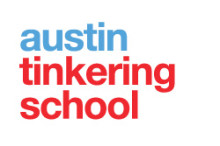The next iteration of maker spaces will facilitate learning and R&D in ways that expand perceptual intelligence, spatial narrative, experimentation, adaptive response, multi-perspective analysis, and creativity, by marrying existing curriculum to innovative approaches that leverage emerging convergent media, entertainment (via new types of experiences), immersive, interactive workshop facilities and techniques.
Due to the emergence of converged media, communications, and entertainment, combined with new creative tools such as telepresence, CCTV, simulation, gaming, sensors, synthetic worlds, and interactive and immersive design, maker spaces are migrating from prototyping and production venues to multi-disciplinary transformative spaces in which we can create blended realities to serve as experience and research simulators.
By constructing collaborative programs that embrace a combination of visual, audio, and interactive make labs, we can develop hands-on, fast-reacting education and research facilities that encourage the creation, production and testing of new approaches experienced as more an immersive event than a string of seemingly unrelated exercises. This approach leverages everything from new techniques in interactive storytelling, to building objects both in the physical and virtual, as well as hybrid and crossover versions.Mr. Woodgate will offer exciting examples of this transformative, experiential work already in progress at Georgia State University’s Digital Arts and Entertainment Lab (DAEL), such as: set design, museum displays, and the sonification of space, installations, and displays that portray the emotional state of the city in order to improve urban development and human interaction.



